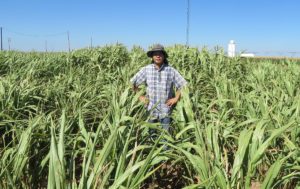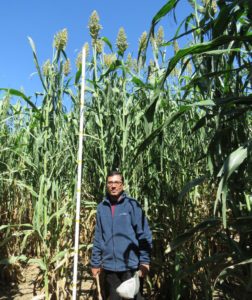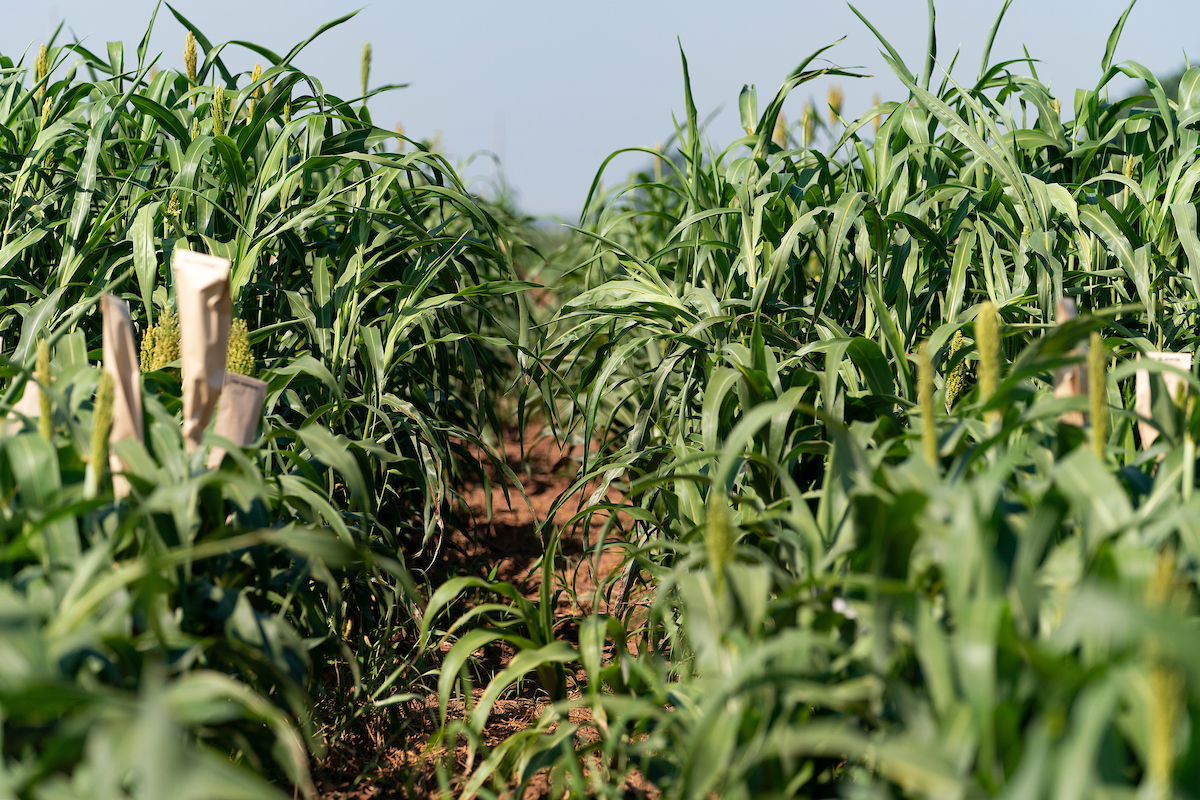AgriLife study: High biomass sorghums can compete under water-stressed circumstances
Writer: Kay Ledbetter, 806-677-5608, [email protected]
Contact: Dr. Qingwu Xue, 806-354-5803, [email protected]
AMARILLO – Bioenergy or high biomass sorghum can be grown in water-stressed situations and still produce good yields, according to a Texas A&M AgriLife Research study being conducted at Bushland and in Kansas.

Dr. Qingwu Xue, AgriLife Research plant physiologist in Amarillo, said this year’s environmental conditions at Bushland provided an excellent opportunity to evaluate drought tolerance and the water-use efficiency, or WUE, of the crop.
This is the first of a two-year study funded by the U.S. Department of Agriculture South Central Sun Grant Program.
Co-investigators include Dr. Jourdan Bell, Texas A&M AgriLife Extension Service agronomist, Amarillo; Dr. Bill Rooney, AgriLife Research sorghum breeder, College Station; Dr. Sushil Thapa, AgriLife Research assistant research scientist, Amarillo; and Dr. Robert Aiken, Kansas State University crop physiologist, Colby, Kansas.

“We are tasked with determining biomass yield performance, water use, drought tolerance and WUE under water-stressed conditions,” Xue said.
Bioenergy sorghum has been identified by the U.S. Department of Energy as the primary bioenergy crop to meet the potential biomass demands for cellulosic ethanol production and other types of renewable energy.
Alternatively, the bioenergy sorghum can be used as a forage crop for cattle and dairy feeding, Xue said.
“In this study, we are investigating six photoperiod-sensitive bioenergy or high biomass sorghum genotypes provided by the AgriLife Research sorghum breeding program in College Station,” he said.
The study is being replicated in Colby, Kansas. At both locations, these genotypes were grown at three water levels: dryland and under irrigation to meet 50 percent and 100 percent evapotranspiration, or ET, demand.
“From the middle of May to Oct. 5, this crop only received 5 inches of rain, which was extremely dry for dryland plots during the growing season at Bushland,” Xue said. “As such, there are huge differences in crop yield and performance among the three water levels.”
Plants under dryland conditions grew about 3-5 feet tall but plants under irrigation at 100 percent ET level were up to 15 feet tall, Thapa said.
In this study, though, Xue and Thapa said they are more interested in the crop performance under water-stressed conditions such as irrigation at 50 percent ET demand and dryland.
“At 50 percent ET irrigation, some sorghum genotypes can still produce over 10 tons of biomass per acre and grow up to 10 feet tall,” Xue said. “This is the best fit for producers with limited irrigation situations. Even the dryland, with only the 5 inches of moisture, produced 2 to 3 tons of biomass per acre this year.”
He said the almost 8 inches of rain that fell from Oct. 6-9 came too late to affect yields.
In addition to water levels, Xue said there was a noticeable difference among genotypes, adding, “you can visually see the differences in height and density. This will allow us to identify the best genotypes and traits related to drought tolerance and WUE in high biomass sorghum.”
With all the harvest completed and yields collected, the biomass will now be sent to College Station to Rooney’s lab for chemical composition analysis. This will help determine different environment-related quality traits for future use by breeders and geneticists to identify specific traits they want in the germplasm.
“We will have another year on this study, but what we are hoping to provide is management information for producers on a new crop option if biomass sorghum fits into their rotation system,” Xue said.






